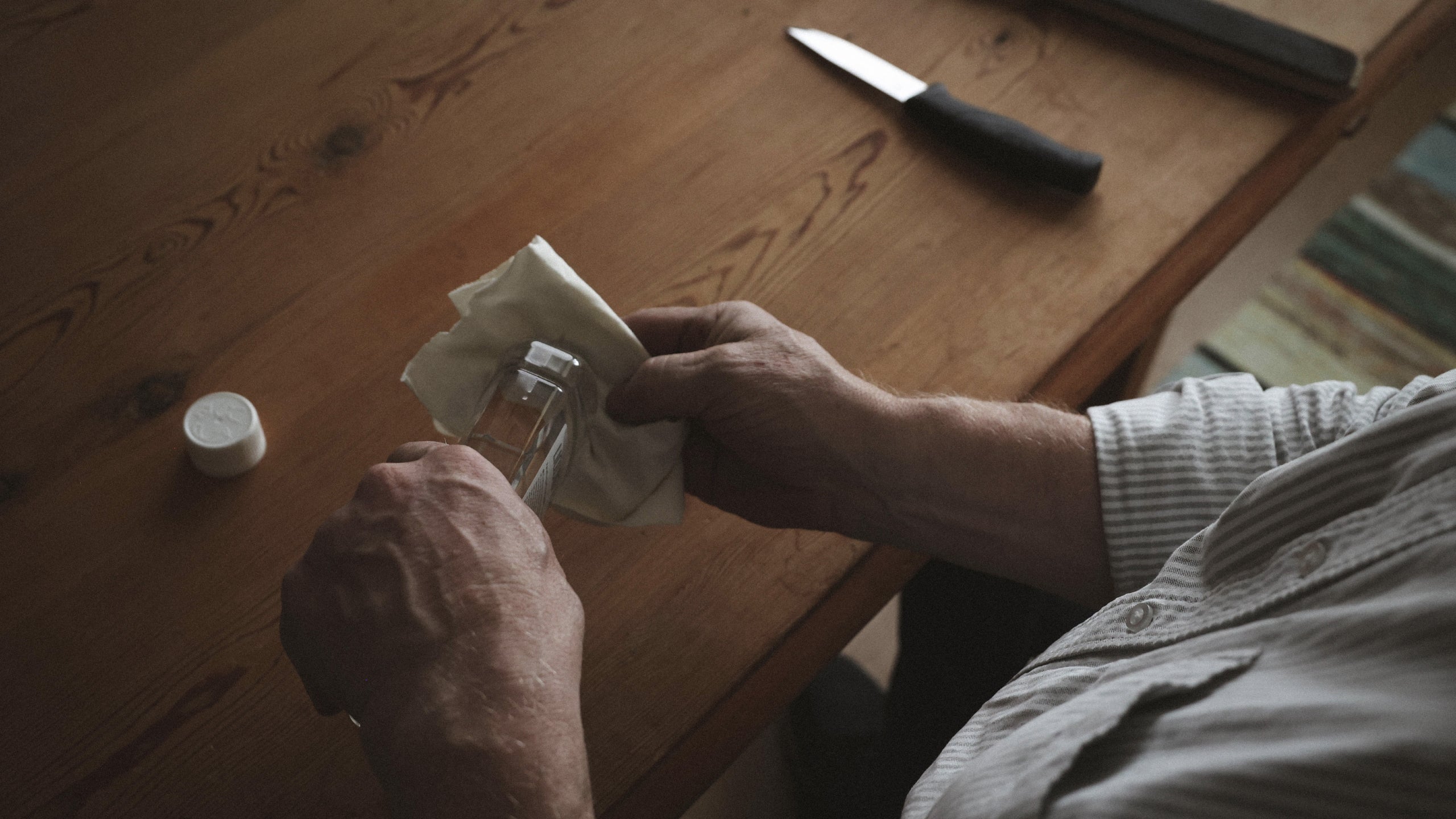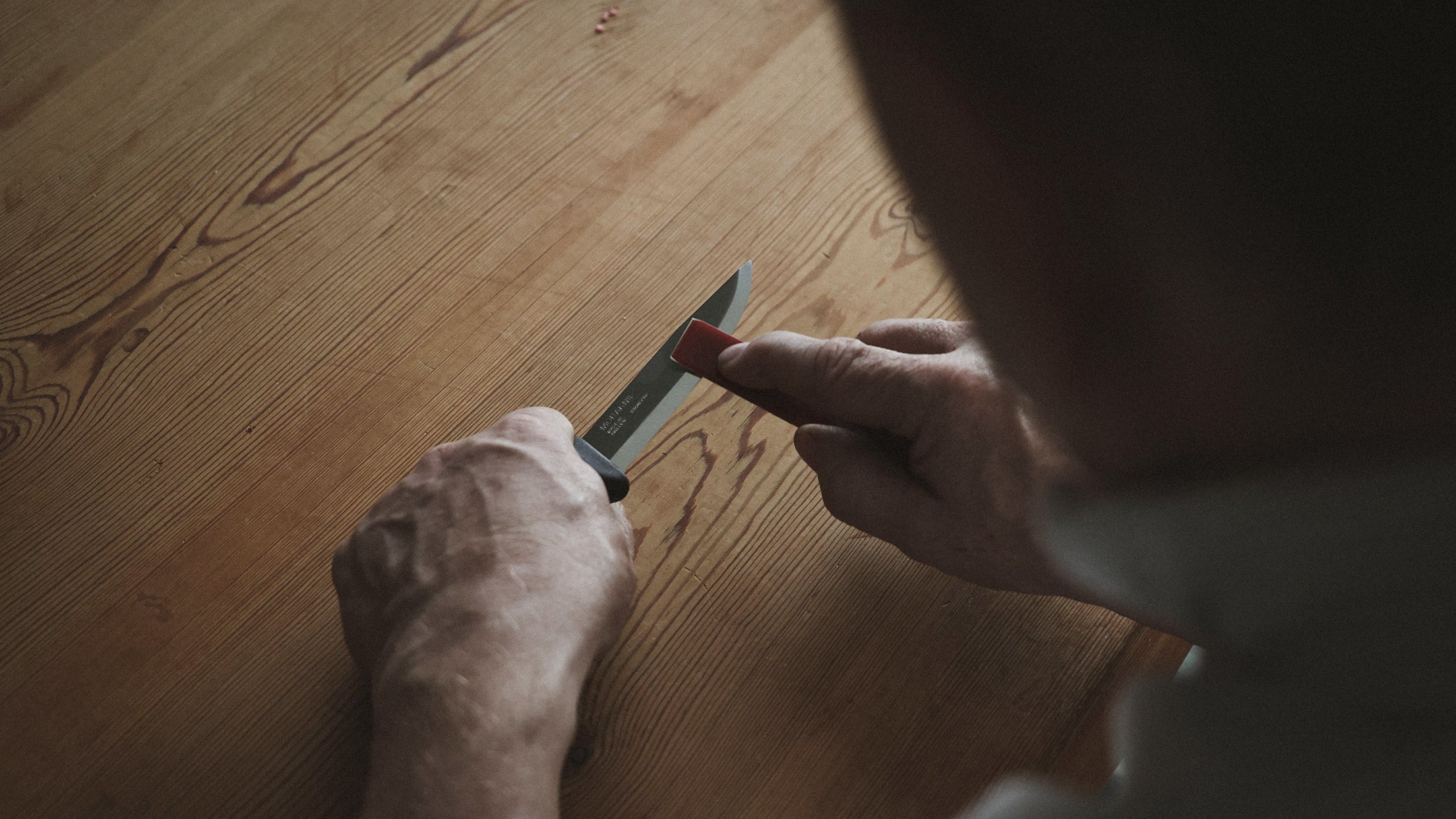Taking care of your knives is the best way to extend their lifespan. With the right knife care, you’ll have an edge that keeps its sharpness and a knife that’s safer to use – one that will last for years to come. Whether you’re cleaning a knife after a day outdoors or giving your kitchen knives a good soak in soapy water, the right approach makes a big difference.
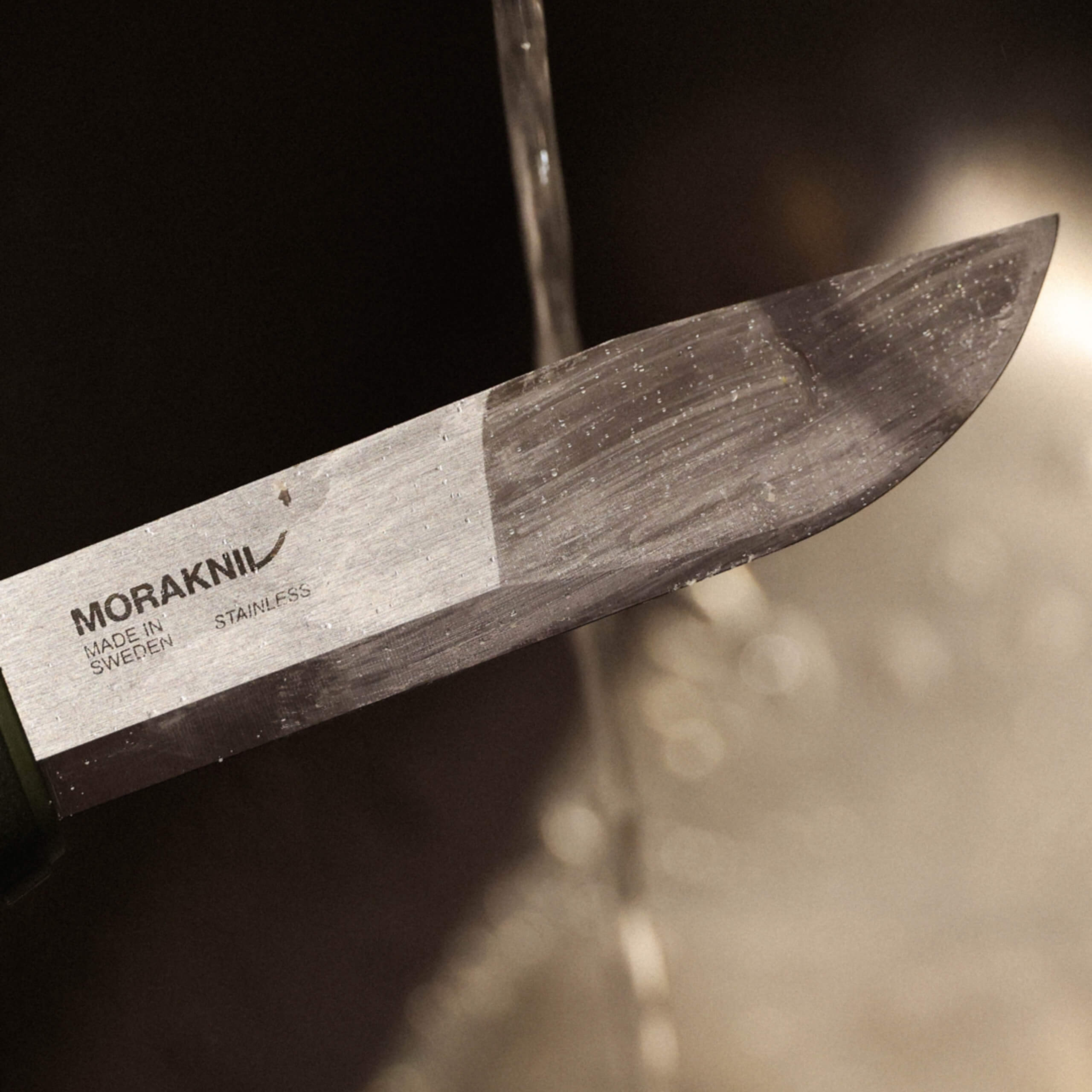
Knife care – why should you take care of your knife?
Morakniv knives are high-quality tools made to be used repeatedly, in different environments and under tough conditions. But even the best knife needs care. By maintaining the entire knife – from blade to handle – you’ll get a sharp edge that cuts really well and lasts longer, while avoiding the blade becoming dull prematurely. This is both an economical and environmentally sustainable choice.It’s also important for safety. Dull knives require more force when you cut meat, fish, or wood, which increases the risk of slipping. With a sharp knife, you have better control and precision.
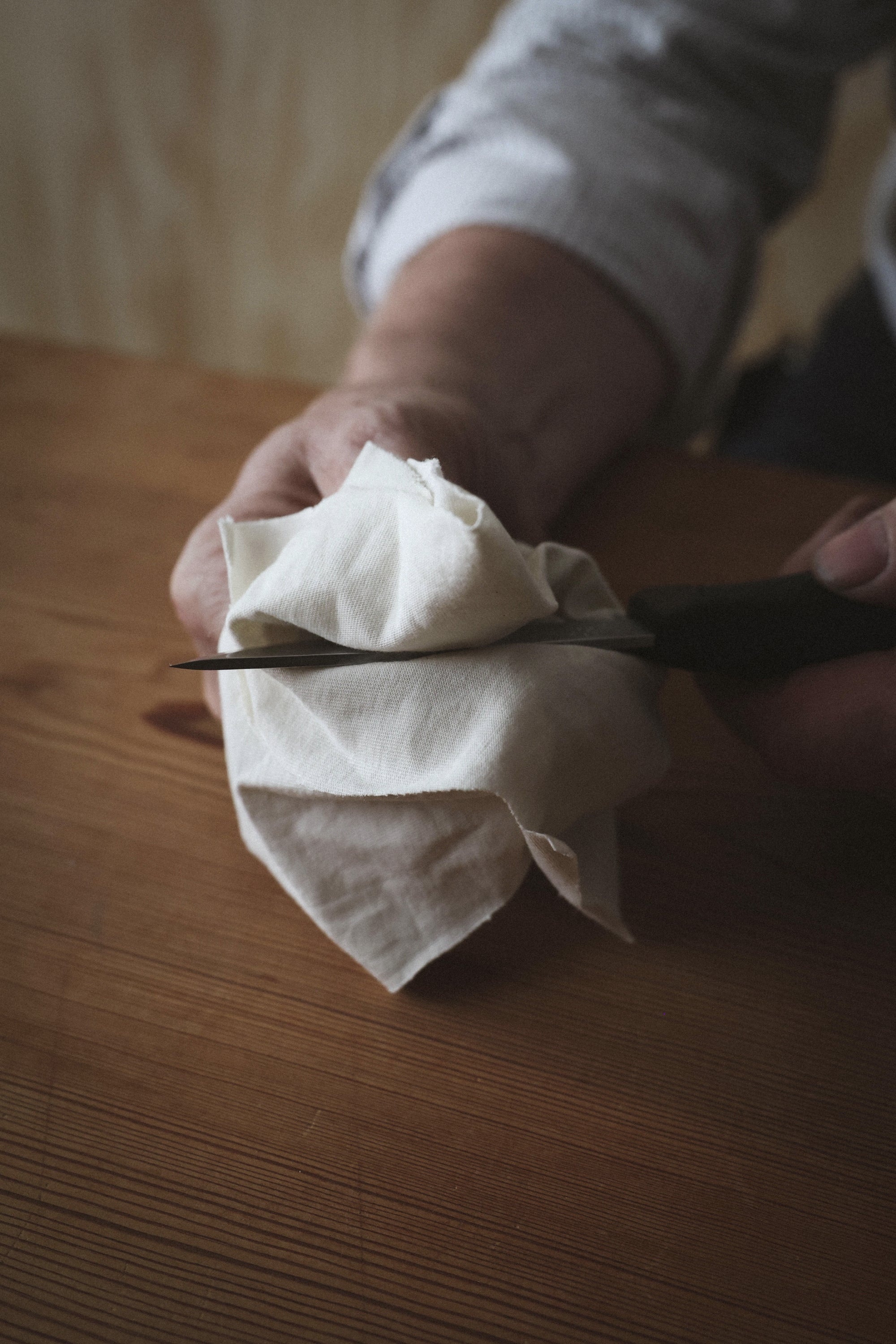
Basic care tips
Here are a few simple ways to keep your outdoor, carving, or pocket knives in top condition:- Clean immediately after use. Rinse the blade in warm water or hot water, preferably with mild dish soap.
- Dry thoroughly. Never air dry the knife after cleaning; wipe with a towel or soft cloth.
- Store safely. Use a sheath or pocket to protect both the edge and yourself.
- Sharpen regularly. A few strokes with a honing steel will help maintain sharpness.
- Inspect often. Small chips, dirt, or surface rust can be removed before they become bigger problems.
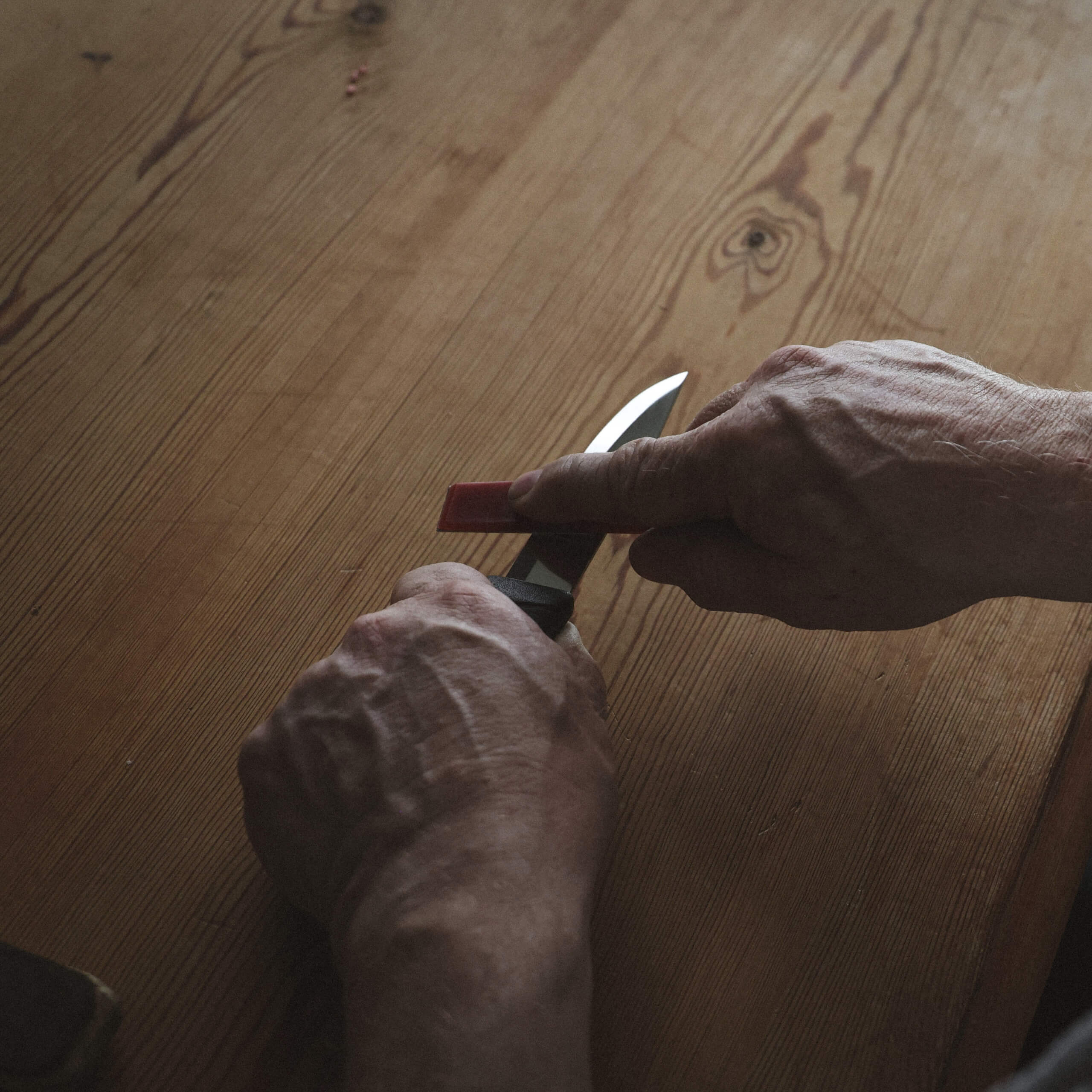
Sharpening – keep your knife sharp
A sharp knife is safer and more efficient than a dull one. Hone the edge regularly to maintain sharpness, and sharpen when needed to restore the profile. Maintain the correct angle and work carefully for the best results.Want to learn more about sharpening techniques, angles, and tools? Read our guide: How to Sharpen Your Knife
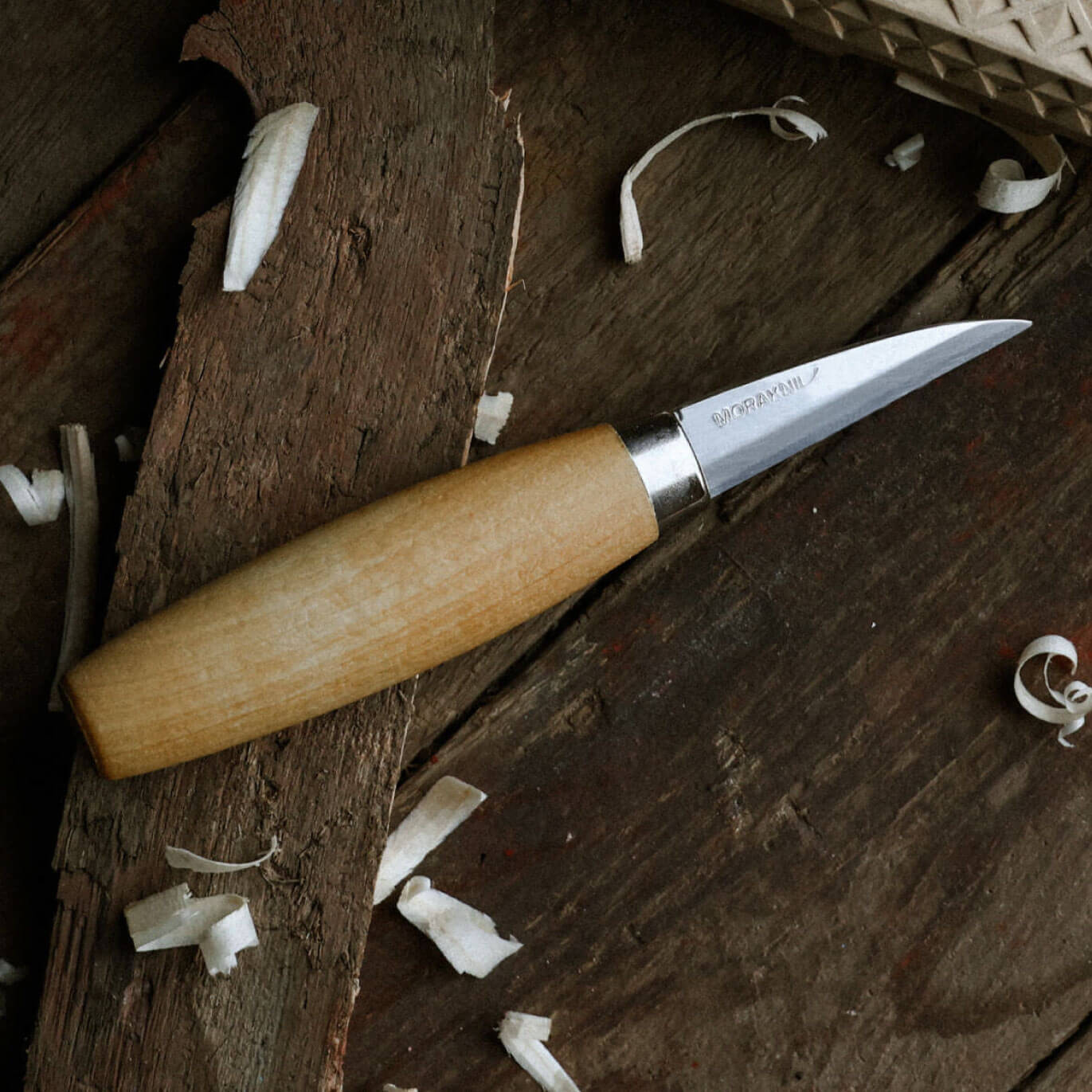
Caring for the handle
Don’t forget to maintain the handle material as well.- Wooden handles: Clean with soapy water or a damp cloth, and occasionally apply a layer of neutral wood oil or mineral oil to prevent cracks and drying.
- Plastic or composite handles: Wash with mild dish soap and water. Avoid extreme heat, direct sunlight, or letting dirt and food residue build up on the surface.
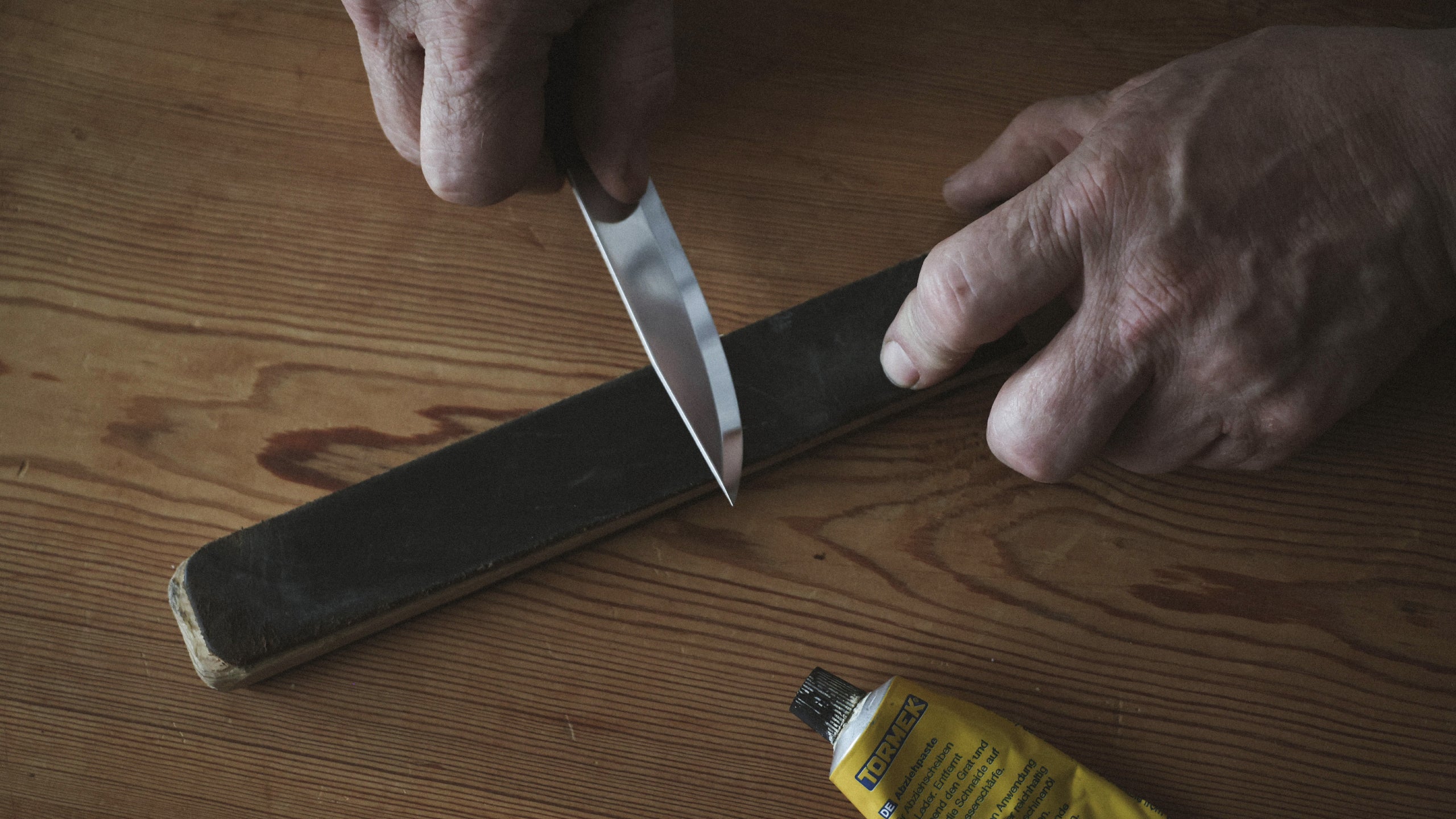
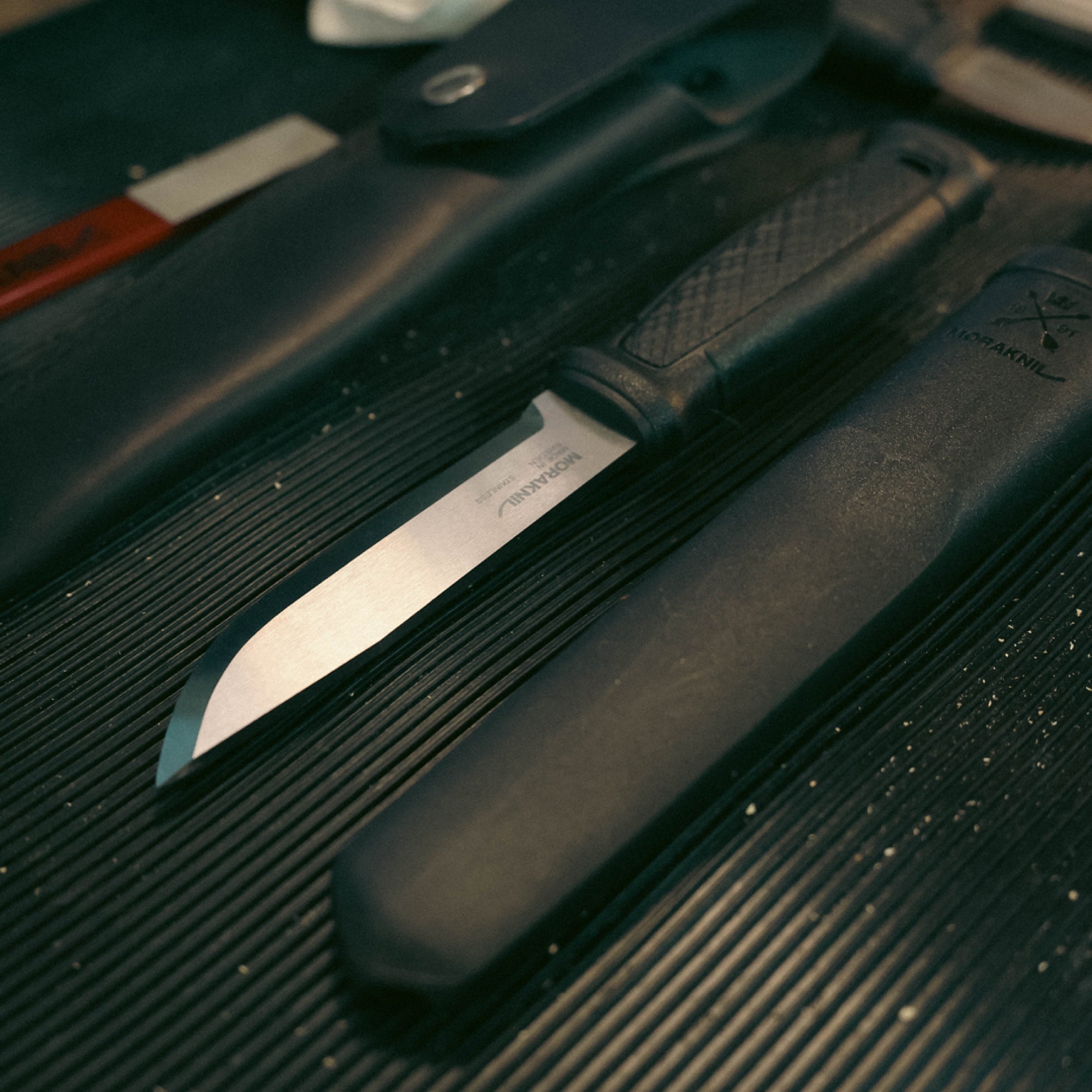
Storage and handling
Knives should always be stored in their sheaths or a dedicated stand when not in use. This protects the edge, maintains sharpness, and reduces the risk of injury. Keep leather and nylon sheaths dry and clean. Regularly check that belt loops, screws, or paracord are intact.If you carry a pocket knife daily, keep it clean inside and out. Use a small brush or compressed air to loosen grit in the pivot area and avoid excess oil that can attract pocket lint.
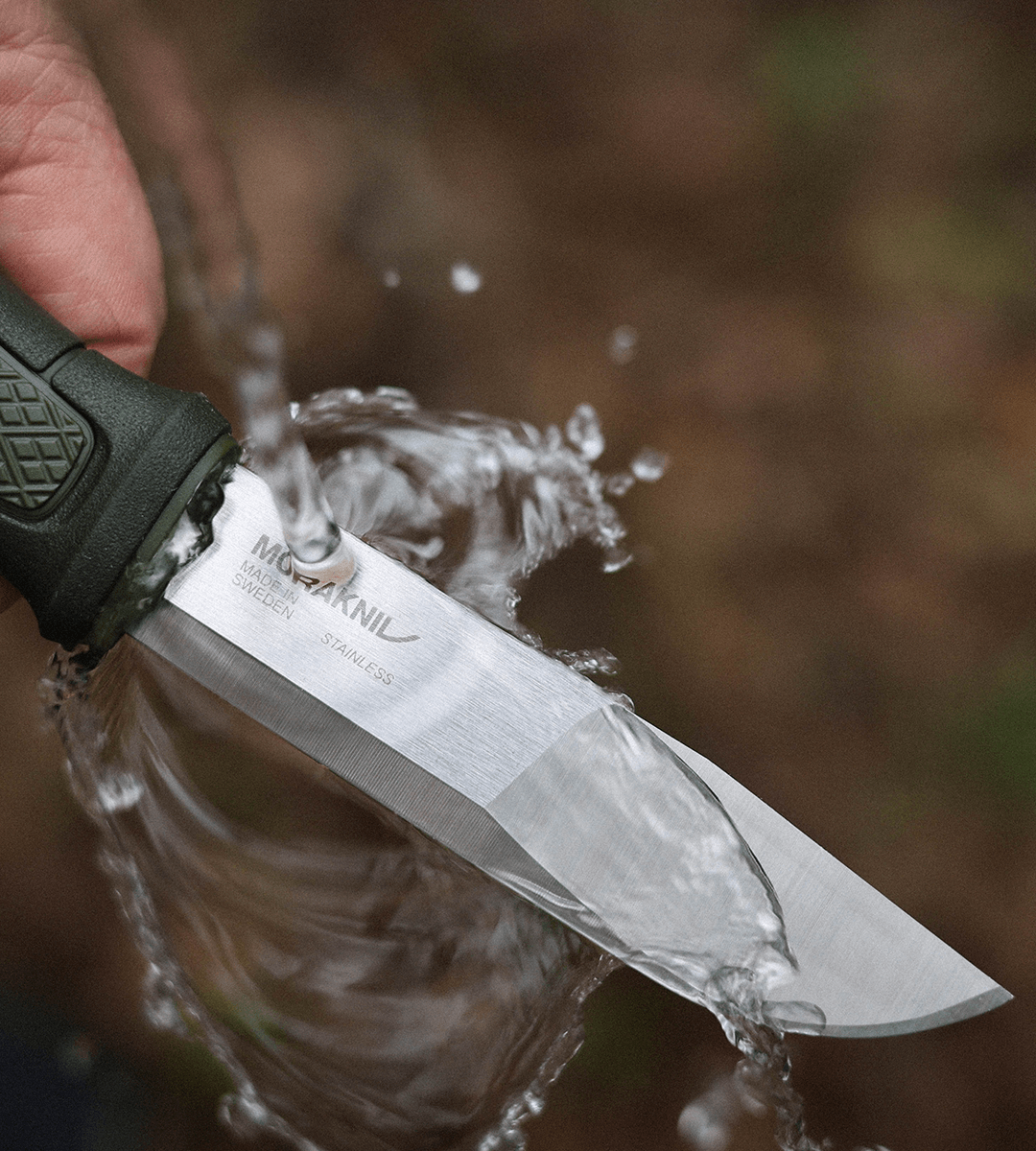
Avoid dishwashers
Never wash knives in a dishwasher. The detergent and heat can damage the steel, the edge, and the handle. Carbon and laminated steel knives should never be put in a dishwasher, and stainless steel knives don’t benefit from it either. Sharp edges can scratch the interior, and there’s a real risk of injury when loading or unloading dirty knives.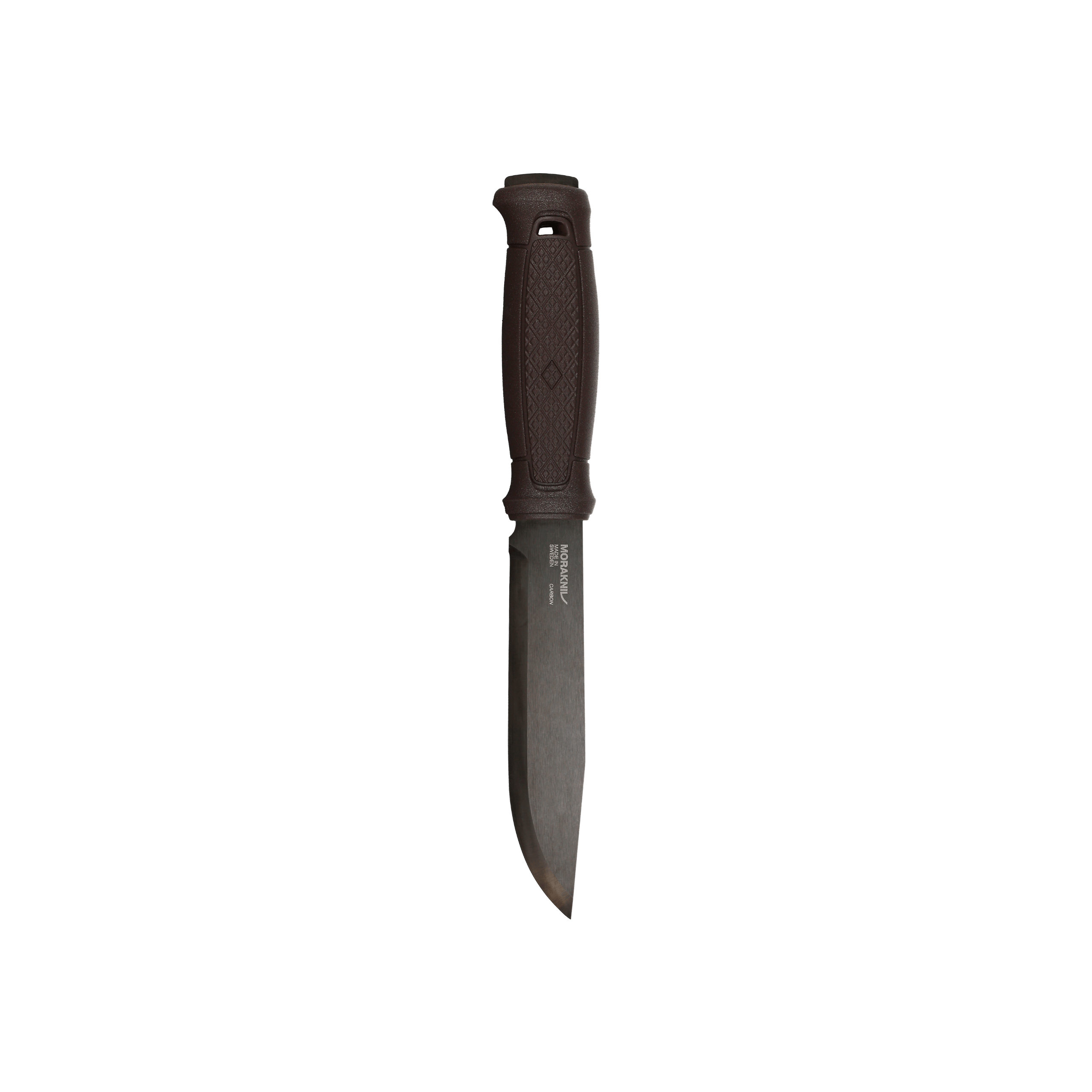
Carbon steel – requires a little more care
Carbon steel delivers extremely sharp knives with excellent cutting performance, but it needs protection from moisture and food acids. Always dry the blade thoroughly after each use, and apply a layer of food-grade oil, mineral oil, or other lubricant.A tried-and-true way to make the blade more resistant is to create a patina. You can do this by inserting the knife into a piece of fruit, such as an apple, or treating the blade with warm vinegar. The patina acts as a protective surface that helps the edge last longer, even when cutting tough materials like wood or meat on the ground during outdoor use.
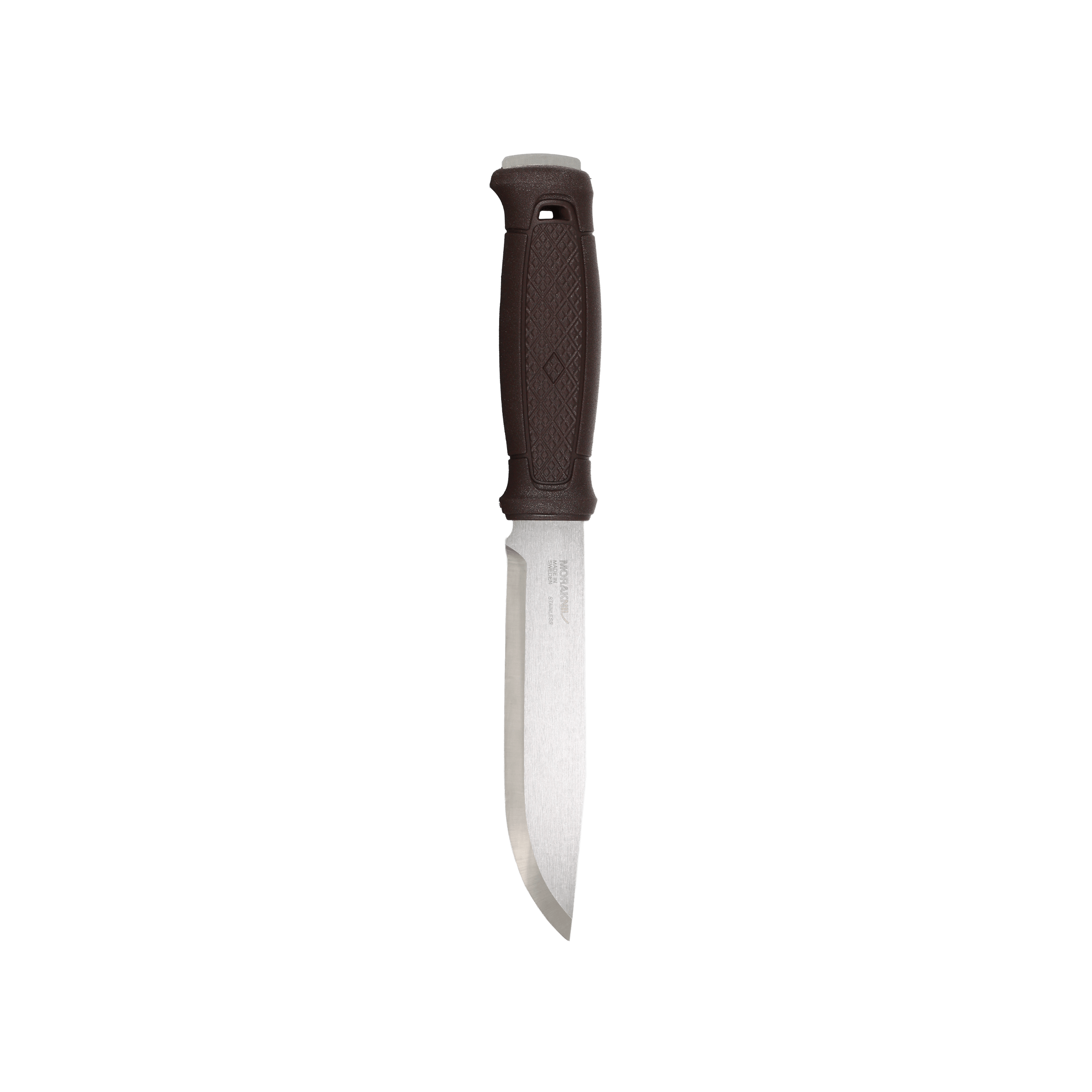
Stainless steel – easy to maintain
Stainless steel is easy to look after and is a great choice if you want to spend less time on cleaning knives. Technically, it should be called corrosion resistant steel, as it is rust-resistant rather than rust-proof – surface rust can still appear if you don’t care for your knife. Always rinse the blade in warm water after use and dry it thoroughly. Never leave the knife wet – salt, dirt, and other particles can cause stains or rust that are tough to remove.Tip: If you use your knife by the sea or in humid conditions, it’s worth occasionally applying a thin layer of mineral oil or sewing machine oil to the blade to protect the shiny metal surface and maintain the edge.
